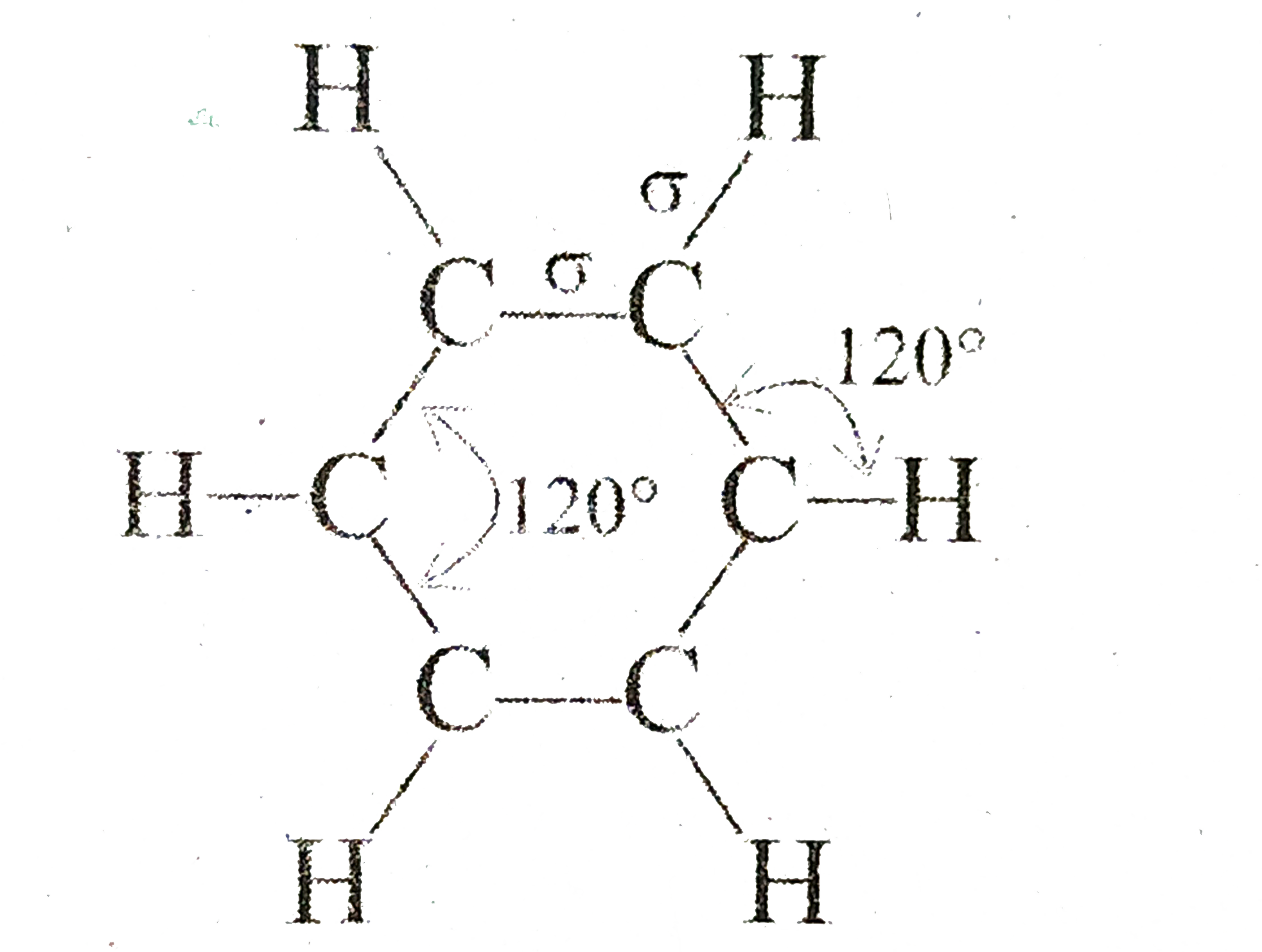Briefly explain the molecular orbital structure of benzene.
Text Solution
(i) All the six carbon atoms in benzene are sp2 hybridised. The sp2 hybrid orbitals overlap with each other and with ‘5’ orbitals of the six hydrogen atoms forming C—C and C—H bonds.
Since, the bond results from the overlap of sp2 planar r hybrid orbitals, all carbon and hydrogen atoms in benzene lie in the same plane and all the bond angles are 120∘ as shown below:
(iii) The unused ‘2p’ orbitals of each carbon atom which lie above and below the plane overlap laterally producing 3n molecular orbitals containing six electrons as shown in (a) and (b) below:
(iv) As the overlapping on both sides are equal, all the six ‘p’ orbitals unite to form a continues n molecular orbitals containing six electrons as shown below.
The formation of continuous molecular orbital suggests that all the six pi electrons are common to all the six carbon atom. The participation of pi electrons in more than one bond is called delocalisation of pi electrons.
(v) The molecular orbital picture of benzene explains all the known facts of about benzene, i.e., planarity of the molecule, bond angle, equal C—C bond lengths and stabilisation of the molecule.



|
Similar Questions
Explain the structure of benzene.
View SolutionDiscuss the orbital structure of benzene.
View SolutionExplain the structure of benzene .
View SolutionExplain the structure of benzene .
View SolutionHow many electrons are present in the delocalised pi-molecular orbital of benzene?
View SolutionExplain the resonance structure of benzene. What do you understand by resonance hybrid?
View SolutionExplain briefly

View SolutionThe delocalised π -molecular orbital in benzene contains three ......... bicentric molecular orbitals and possesses full ...... symmetry.
View SolutionExplain briefly the formation of the product giving structures of the intermediates.

View SolutionExplain briefly the formation of the product giving structures of the intermediates.

View Solution
